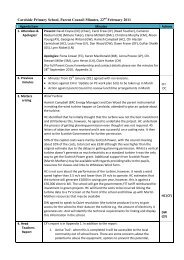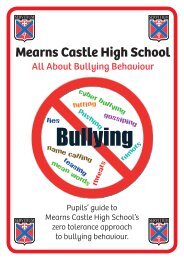TOPIC 12 Corrosion.pdf
TOPIC 12 Corrosion.pdf
TOPIC 12 Corrosion.pdf
You also want an ePaper? Increase the reach of your titles
YUMPU automatically turns print PDFs into web optimized ePapers that Google loves.
<strong>TOPIC</strong> <strong>12</strong> CORROSION<br />
1 state that corrosion is a chemical reaction which involves the surface of a metal<br />
changing from an element to a compound<br />
2 give examples to show that different metals corrode at different rates<br />
3 explain that corrosion is an example of oxidation<br />
4 apply the term rusting to the corrosion of iron<br />
5 state that both water and oxygen (from the air) are required for rusting<br />
state that water, oxygen and dissolved carbon dioxide,or another electrolyte, are<br />
required for<br />
rusting<br />
6 state that when iron rusts, initially the iron atoms lose two electrons to form Fe 2+<br />
ions<br />
7 state that the electrons lost by the iron during rusting are accepted by the water<br />
and<br />
oxygen to form hydroxide ions<br />
8 state that ferroxyl indicator for Fe 2+ (aq) can be used to show the extent of the<br />
rusting<br />
process<br />
9 state that salt spread on roads increases the rate of corrosion on car bodywork<br />
10 explain that salt acts as an electrolyte<br />
11 state that iron does not rust when attached to the negative terminal of a battery<br />
<strong>12</strong> state that electrons flowing to the iron prevents rusting<br />
13 explain the reaction at the iron in an iron/carbon cell using the colour change<br />
of<br />
Fe 2+ indicator and direction of electron flow<br />
14 state that with metals higher in the electrochemical series, electrons flow to the<br />
iron, and with metals lower in the series, electrons flow from the iron<br />
explain the reactions in a cell using the colour change Fe 2+ indicator and the<br />
direction of flow<br />
15 explain what is meant by the following:<br />
Electroplating, galvanising, tin-plating<br />
16 explain that a surface barrier to air and water can provide physical protection<br />
against<br />
corrosion, eg painting, greasing, electroplating, galvanising, tin-plating, coating<br />
with plastic.<br />
17 explain the effect of sacrificial protection in terms of electron flow (eg<br />
galvanising, scrap magnesium)<br />
explain the effect of scratching tinplate in increasing the rate of rusting of iron<br />
18 give everyday examples of anti-corrosion methods in 15, 16 and 17 above.
<strong>TOPIC</strong> <strong>12</strong> CORROSION<br />
1 state that corrosion is a chemical reaction which involves the surface of a metal<br />
changing from an element to a compound<br />
2 give examples to show that different metals corrode at different rates<br />
3 explain that corrosion is an example of oxidation<br />
4 apply the term rusting to the corrosion of iron<br />
5 state that both water and oxygen (from the air) are required for rusting<br />
state that water, oxygen and dissolved carbon dioxide,or another electrolyte, are<br />
required for<br />
rusting<br />
6 state that when iron rusts, initially the iron atoms lose two electrons to form Fe 2+<br />
ions<br />
7 state that the electrons lost by the iron during rusting are accepted by the water<br />
and<br />
oxygen to form hydroxide ions<br />
8 state that ferroxyl indicator for Fe 2+ (aq) can be used to show the extent of the<br />
rusting<br />
process<br />
9 state that salt spread on roads increases the rate of corrosion on car bodywork<br />
10 explain that salt acts as an electrolyte<br />
11 state that iron does not rust when attached to the negative terminal of a battery<br />
<strong>12</strong> state that electrons flowing to the iron prevents rusting<br />
13 explain the reaction at the iron in an iron/carbon cell using the colour change<br />
of<br />
Fe 2+ indicator and direction of electron flow<br />
14 state that with metals higher in the electrochemical series, electrons flow to the<br />
iron, and with metals lower in the series, electrons flow from the iron<br />
explain the reactions in a cell using the colour change Fe 2+ indicator and the<br />
direction of flow<br />
15 explain what is meant by the following:<br />
Electroplating, galvanising, tin-plating<br />
16 explain that a surface barrier to air and water can provide physical protection<br />
against<br />
corrosion, eg painting, greasing, electroplating, galvanising, tin-plating, coating<br />
with plastic.<br />
17 explain the effect of sacrificial protection in terms of electron flow (eg<br />
galvanising, scrap magnesium)<br />
explain the effect of scratching tinplate in increasing the rate of rusting of iron<br />
18 give everyday examples of anti-corrosion methods in 15, 16 and 17 above.


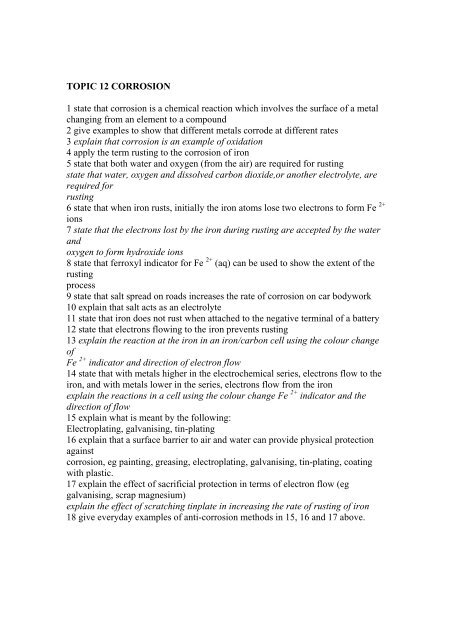
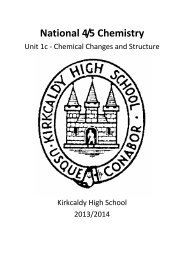
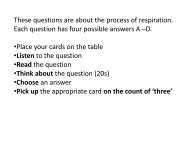
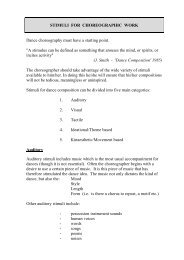

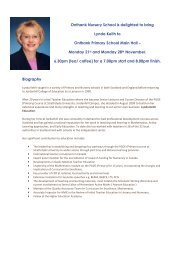

![Eastwood_Area_Catchment_updated_16-5-11[1]](https://img.yumpu.com/17146012/1/184x260/eastwood-area-catchment-updated-16-5-111.jpg?quality=85)

